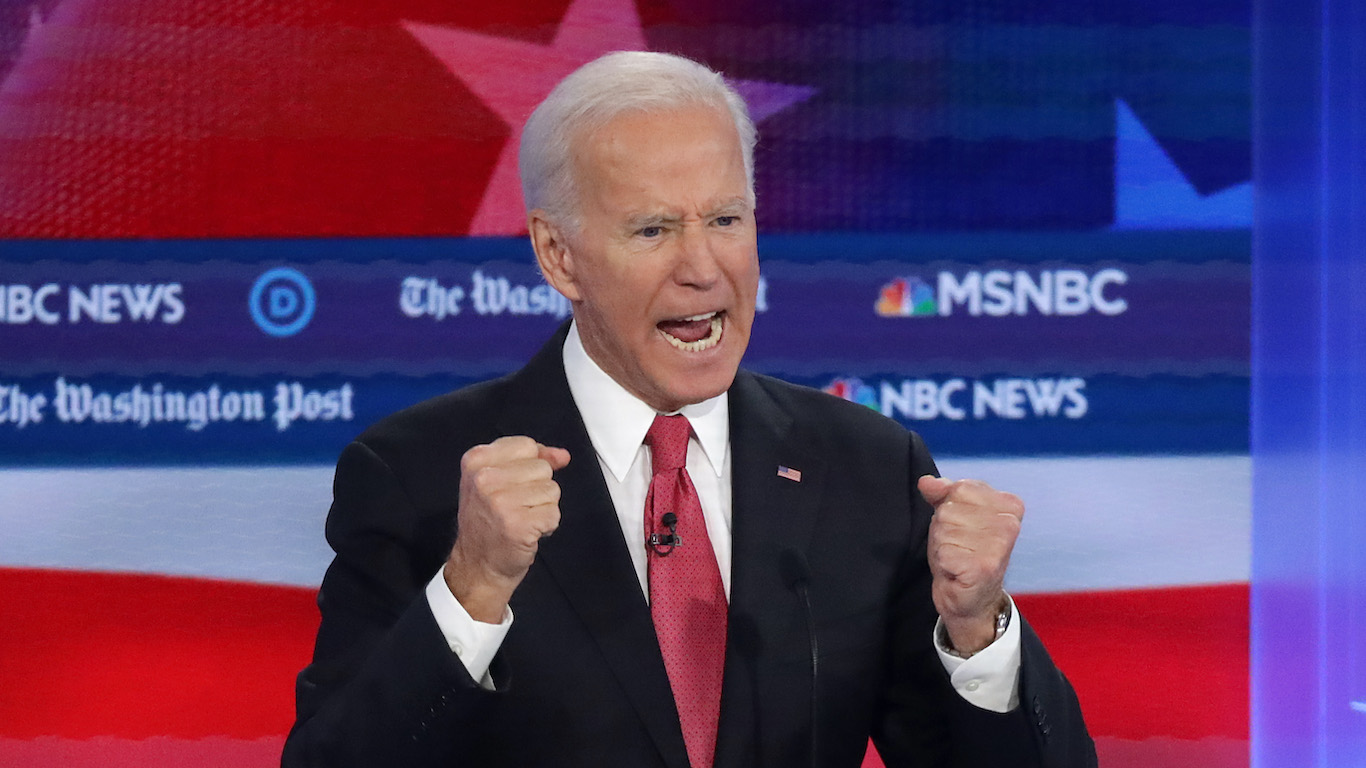Investing
Biden Loves Unions, But Still Holds GM and Ford Over A Barrel With EV Agenda

Published:

Biden has built his identity as a president on supporting unions, self declaring in a White House statement that:
As the most pro-union president in American history, I believe American workers, too, should have a voice at work. The decision whether to join a union belongs to the workers. – Whitehouse.gov, March 18th, 2024
And it’s worked, somewhat. The United Steelworkers Union (USW) recently endorsed Biden over Trump for the 2024 presidential race (as they did in the prior campaign), and the Center for American Progress echoed Biden’s own statement and declared him “the most pro-union president in history”
Yet at the same time Biden is making life very difficult for the nearly 150,000 unionized auto workers at Ford (NYSE: F), General Motors (NYSE: GM), and Stellantis with his EV agenda.

Traditional automakers went all in on electric vehicles, collectively investing billions of dollars to catch up to Tesla (Nasdaq: TSLA), Rivian (Nasdaq: RIVN), and other pure play EV companies. The administration has also has renewed and released additional incentives for EV buyers, expressed support for the transition from ICE vehicles, and announced $325 million in new investments to improve charging networks in the US.
There are just two problems, and they’re on a collision course.
So how are Ford, General Motors, and Stellantis supposed to meet the extremely strict auto emissions rules, and ‘EV Mandate’ recently set by the EPA? The agency itself declared them the ‘“strongest-ever pollution standards”. To comply, automakers have to increase EV sales to 56% of total US sales by 2032, raise plug-in hybrids to 13%, and shrink traditional combustion vehicles to only 29%.
How are traditional automakers supposed to support their union workers demands for increased pay, while also investing billions of dollars into new vehicles, batteries, and factories (at a loss for the foreseeable future), while they themselves are struggling financially?
There isn’t enough money to go around, and the next time union workers come to the table to negotiate they’ll be trying to get blood from a stone.
A financial advisor can help you understand the advantages and disadvantages of investment properties. Finding a qualified financial advisor doesn’t have to be hard. SmartAsset’s free tool matches you with up to three financial advisors who serve your area, and you can interview your advisor matches at no cost to decide which one is right for you. If you’re ready to find an advisor who can help you achieve your financial goals, get started now.
Investing in real estate can diversify your portfolio. But expanding your horizons may add additional costs. If you’re an investor looking to minimize expenses, consider checking out online brokerages. They often offer low investment fees, helping you maximize your profit.
Thank you for reading! Have some feedback for us?
Contact the 24/7 Wall St. editorial team.